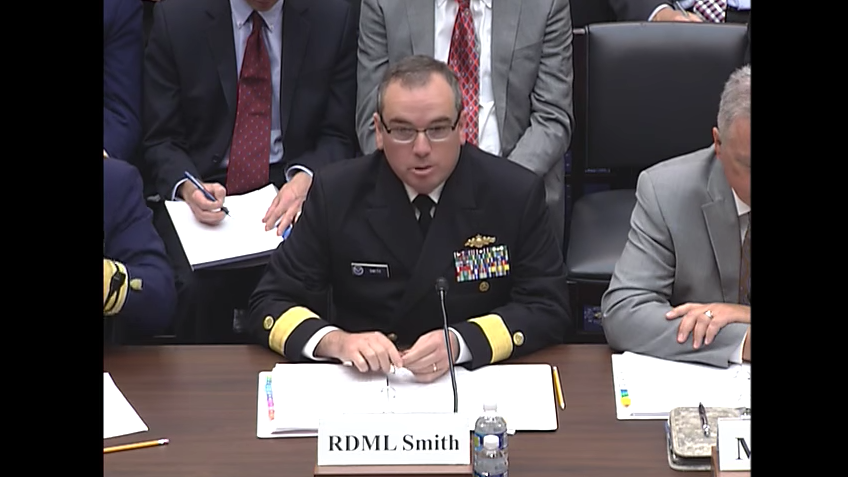The National Oceanic and Atmospheric Administration (NOAA) is committed to using the latest technologies to provide mariners and others with science-based information and services on the present and future condition of the marine environment.
“New technologies are an essential component of this effort and I believe we are on the cusp of a new era for delivering the accurate navigation products and services required to meet the needs of increasingly complex marine transportation,” Rear Adm. Shepard Smith, director of the Office of Coast Survey at the National Oceanic and Atmospheric Administration (NOAA), testified at a joint hearing of the Subcommittee on Coast Guard and Maritime Transportation and the Subcommittee on Water Resources and Environment on Wednesday.
At the hearing, which discussed federal maritime navigation programs, Smith said that NOAA is committed to supporting the “blue economy,” defined as businesses that rely on the oceans and inland and coastal waterways. “We do this in two ways. First, the information we provide to the public is critical not only to the major international shipping industry, but also coastwise commerce, tug and barge, fishing, recreational boating, military and government operations, and maritime small business industries. Second, the industry of collecting and delivering environmental intelligence to the public.”
Smith cited a recent NOAA-led study that shows that the 400-plus for-profit and non-profit companies that support ocean measurement, observation, and forecasting accounts for $7 billion annually and provides up to 30,000 jobs.
Smith discussed NOAA’s National Charting Plan that is changing how the agency produces and delivers nautical charts. He said the Office of Coast Survey has nearly completed the transition to a new charting system that uses one central database to produce all NOAA chart products. This system speeds new data and updates to all chart versions of the same charted areas and removes inconsistencies.
Since NOAA privatized all chart printing and transitioned to full print-on-demand in 2014, “We can now support faster digital updates that are synchronized across all products rather than the delayed publications made necessary by the old paper chart system,” Smith told lawmakers. “Our charts can now reflect real world features that change monthly, such as updating an ocean inlet changed by winter storms in time for the summer boating season.”
These changes will allow NOAA to be more responsive to changing public needs for navigation data. As part of the National Charting Plan, NOAA will identify areas that need more detailed chart coverage, and reorganize its electronic charts to provide seamless electronic coverage for our coasts and Great Lakes.
“In order to aggregate the highest quality data to build new charts, we will first assess currently available data, including traditional hydrographic surveys and topo-bathymetric lidar data from our partners such as the Corps of Engineers, U.S. Geological Survey, state and local groups, and other nontraditional sources,” Smith testified. “We will prioritize new data acquisition based on reported chart discrepancies, new traffic patterns, and coastal changeability. New techniques using satellite imagery to estimate water depth and crowdsourced depth data from volunteer boats will allow us to more efficiently target our survey resources to areas that will have the most impact.”





